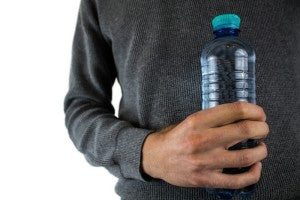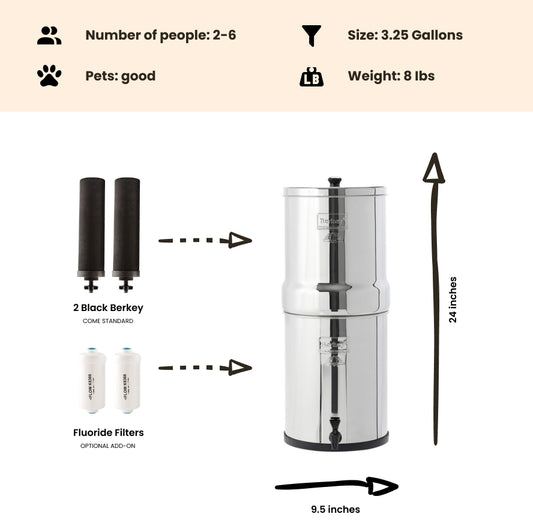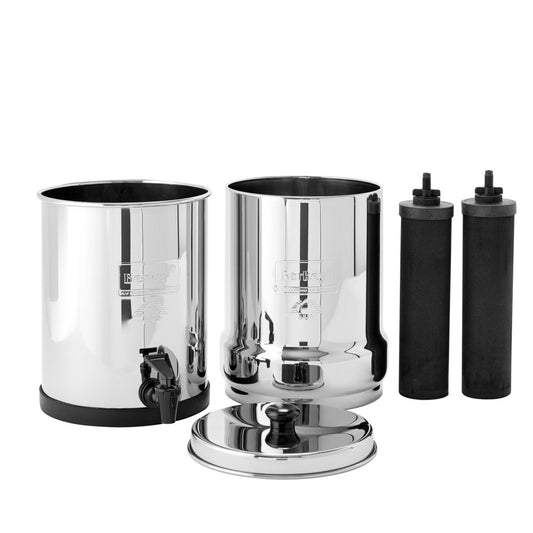
Microplastics in Bottled Water
By Dan DeBaunShare
Orb Media, a D.C.-based group of investigative journalists, recently published Invisibles: The Plastic Inside Us, highlighting the global problem of microplastics - tiny bits of plastic measuring less than 5mm that are highly prevalent in the environment which are released when larger pieces of discarded plastic breakdown — in drinking water that flows from our taps.
Now, in a follow-up investigation, they reveal that bottled water fares no better. In fact, after comparing the levels of microplastics in bottled water to that in tap water, they found that tap water was the healthier choice.
For the study, a team of researchers from the State University of New York led by Sherri Mason tested 259 bottles of bottled water from nine countries. The researchers screened the contents of the bottles for plastic using the Nile Red method, a technique that was specifically developed to quickly detect plastic particles in seawater. The technique involves adding a red dye to the water, which adheres to free-floating bits of plastic, rendering them fluorescent under certain lighting conditions.

After filtering the dyed bottled water samples, Sherri Mason and her team set about counting every piece of plastic measuring more than 100 microns — about the diameter of a strand of human hair. They found microplastics in 93% of the samples tested, with an average of 325 microplastic particles (10.4 > 100 micron; and 314 < 100 micron in size) per liter of bottled water tested.
"For microplastic debris around 100 microns in size, about the diameter of a human hair, bottled water samples contained nearly twice as many pieces of microplastic per liter (10.4) than the tap water samples (4.45)," according to the new report.
These figures are twice as high as the levels of microplastics detected in their previous study on tap water. Yet, many consumers believe that bottled water is cleaner and healthier than tap water, a belief which research has shown to be unfounded.

While this study and the resulting Orb Media report, Plus Plastic: Microplastics Found in Global Bottled Water, has not been published in a scientific journal, and therefore has not undergone the peer review process, in a BBC article covering this topic, scientific experts weighed in.
According to Dr Andrew Mayes, a research scientist from the University of Anglia who pioneered the Nile Red method used to quantify plastic particles in the is study, the technique used involves "very high quality analytical chemistry" and he in fact considers these results to be "quite conservative".
Michael Walker, a founding board member of the UK Food Standards Agency who also provides consulting services to the Office of the UK Government Chemist, agrees that the work is robust and the Nile Red method is sound.
Both experts agree that while the particles measuring less than 100 microns had not been positively identified as plastics, there is a good likelihood that they are, given the fact that possible alternatives were not likely to be found in bottled water.
But the question remains; where is this plastic originating from? The authors believe that the contamination is originating from the plastic bottles the water is packaged in or the bottling process itself. Considering that plastic bottle caps are made from polypropylene plastic (making up 54% of the plastic found in bottled water), one possibility could be that particles are shed into the contents as the bottle is opened.
According to the Mayo Clinic, in terms of safety, bottled water is generally on a par with tap water. Bottled water is regulated by the US Food and Drug Administration (FDA), while tap water is regulated by the US Environmental Protections Agency (EPA). So the decision to drink bottled water rather than tap water is largely a matter of personal preference.
Perhaps the safest option would be to simply filter any water that you drink to remove any microplastics or other contaminants that may be lurking in your drinking water.
Note Regarding our Berkey Systems: The Berkey has yet to be tested for microplastics removal. The study states, "There is nowhere really where you can say these are being trapped 100%. In terms of fibres, the diameter is 10 microns across and it would be very unusual to find that level of filtration in our drinking water systems.” With that being said, we know that the berkey can filter down to 2 microns and less, so until testing is done, we can only state that the berkey would be filtering out more of these microplastics than your town's municipal water filtering system.
-
Regular price $234.00 USDRegular priceUnit price / per
-
Regular price $327.00 USDRegular priceUnit price / per
-
Regular price From $367.00 USDRegular priceUnit price / per
-
Regular price From $408.00 USDRegular priceUnit price / per
-
Regular price From $451.00 USDRegular priceUnit price / per
-
Regular price From $478.00 USDRegular priceUnit price / per
-
Regular price $332.50 USDRegular priceUnit price / per
$350.00 USDSale price $332.50 USDSale

Dan DeBaun
Dan DeBaun is the owner and operator of Big Berkey Water Filters. Prior to Berkey, Dan was an asset manager for a major telecommunications company. He graduated from Rutgers with an undergraduate degree in industrial engineering, followed by an MBA in finance from Rutgers as well. Dan enjoys biohacking, exercising, meditation, beach life, and spending time with family and friends.
~ The Owner of Big Berkey Water Filters















